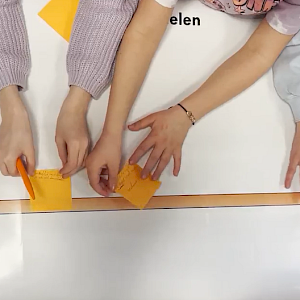What does the online world of children look like? And what are the opportunities and challenges of their online world? To answer these questions, Movez Network PhD candidate Ying Chuck and her team worked with almost 130 children to explore their online world.
What did we want to learn from this research?
From this research we wanted to learn more about children’s online world between the ages 8 to 12. We wanted to learn about what they do on their digital media and the online opportunities and challenges they face.
Why did we want to learn this?
Children today are growing up with digital media as a big part of their lives. While digital media can offer many benefits, it also has challenges. For children to thrive in the current digital media society, they need to handle these challenges and take advantage of the benefits. Research shows that not all children can do this well. To support those children struggling, we need to have a better understanding of what children do online and the challenges and opportunities they face.
How did we learn this?
Together with almost 130 children, ages 8 to 12, we did activities and had discussions about their online world. During these activities and discussions, the children worked in small groups to explore and describe their online experiences. They created mind maps to show the online platforms they use and what they do on them. They also pointed out their online opportunities and challenges and how important these challenges are to them.
What did we learn from this research?
We learned that children are very active on different online platforms and experience various online opportunities and challenges.
What do children do online?
Children shared that they engage in a variety of online activities alone and with others, such as family and friends. Some of these activities are more passive, like watching films on Netflix, searching for inspiration on Pinterest, checking locations of their friends on Snapchat, and spending Robux (virtual money) on Roblox. Other activities are more active, such as playing Roblox games, creating YouTube shorts, learning English on Duolingo, sending and receiving messages on WhatsApp, liking Instagram posts, and teasing other players in Fortnite. With so many online platforms and activities, children also manage their online activities by for example, downloading apps, creating WhatsApp group chats, and setting up YouTube accounts.
What online opportunities do children face?
Children experience various opportunities from their online world. It provides opportunities for their personal growth by offering knowledge and skills, inspiration, a feeling of success and popularity, ability to make choices and receive material rewards. It also provides pleasure by offering entertainment and ability to see other’s misfortunes. We found that children’s online world helped them to manage their mood and mental state by offering chances to pass time, relax, and distract themselves from feelings and thoughts. They also get opportunities for social contact from their online world as it helps them communicate and connect with others. Finally, the online world makes daily activities easier by providing convenience, such as easy access to content and practical benefits.
What online challenges do children face?
Children have personally encountered or are aware of many challenges. Many of which that adults also worry about. They face challenges related to online security and privacy like hacking, privacy violations (where personal data is collected or shared without permission), scams and phishing, blackmailing, and viruses. Their online world also presents them with challenges related to social interactions such as predatory online interactions (e.g., catfishing, stalking and solicitation), digital hostility (e.g., cyberbullying, getting cursed, taunted, insulted or spammed online), and contact with strangers. Children also discussed the consequences of game, smartphone, social media and messaging, and video-on-demand addiction. They also mentioned encountering challenges related to content online such as discomforting content (e.g., scary content) and mis- and disinformation (e.g., deep fakes). Various challenges related to physical health were also shared, such as it being bad for your eyes and getting headaches.
Beyond these online challenges that adults also worry about, children described situations where they were prevented from having a satisfying online experience. These included disturbances (e.g., advertisements or technology failures), non-responsiveness (e.g., friends not picking up the phone), miscommunication (e.g., difficulty to understand someone’s emotions through text), content saturation and overload (feeling overwhelmed by too many options or running out of new content), expenditure (when they had to spend money), restriction imposed by parents and platforms (e.g., screentime and age limits), and failure and challenges (when they were unable to win or encountered difficulties, often in game).
The importance of the social environment
Children’s online experiences are deeply connected to the people around them. They often enjoy doing things online with friends, making their time online a social activity. Even when children haven’t faced certain online challenges themselves, they know about them—likely because they’ve heard stories from others. The online world gives children opportunities to connect with others, but some challenges, like online bullying, also come from those social connections.
What are we going to do with what we learned?
The detailed insights from this research highlight the wide range of online activities, opportunities, and challenges that children experience or know about. Given this, it’s important to involve children in research as experts on their own online experiences. This approach will help research and policy to address the real challenges they face. Also, to fully understand children’s online world, we also need to consider their social environment. People around them—like caregivers, siblings, and friends—play a big role in shaping their online experiences. So, future research and policies should take this into account when creating effective strategies to build children’s digital resilience.
Want to know more? Keep an eye on our website or follow us on LinkedIn for the full paper! Can’t wait? Read the pre-print below!
